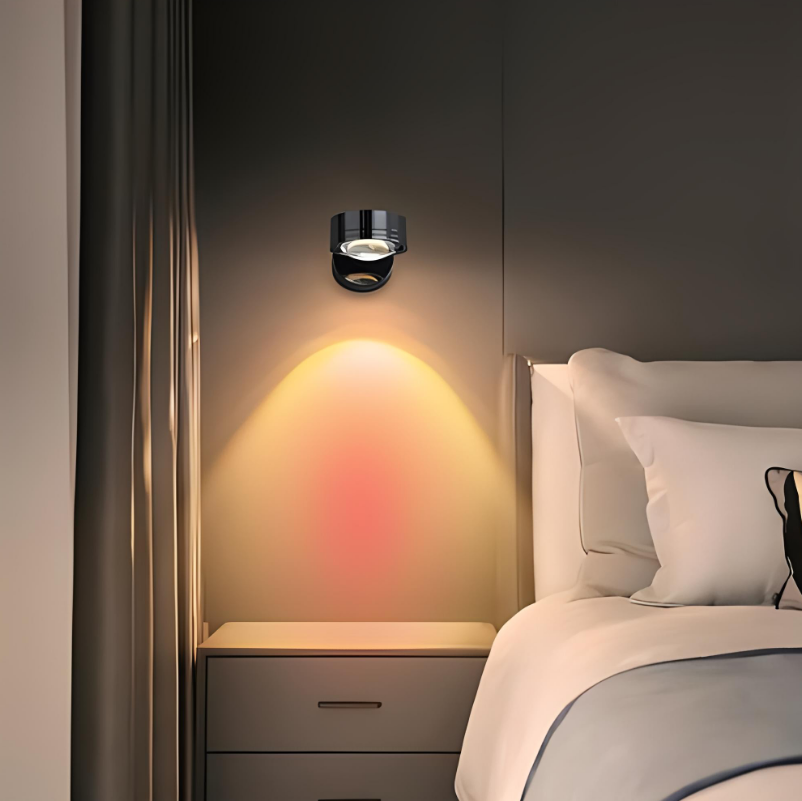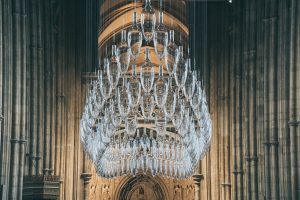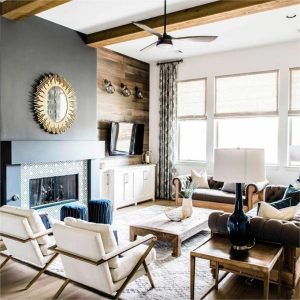
Light Up Your Space with Modern Wall Lamps: A Guide to Choosing the Perfect Fixture
Lighting plays a crucial role in interior design, as it has the power to transform a space and create a desired atmosphere. Wall lamps are an essential element of lighting design, providing both functional and aesthetic benefits. They not only illuminate a room but also add style and character to the overall decor. Whether you are looking to enhance the ambiance of your living room, create a cozy reading nook, or add task lighting to your workspace, wall lamps are a versatile and practical choice.
One of the key benefits of using wall lamps is their ability to save space. Unlike floor lamps or table lamps, wall lamps are mounted on the wall, freeing up valuable floor or table space. This is especially beneficial in smaller rooms or spaces where every inch counts. Additionally, wall lamps can be strategically placed to provide focused yahiloo lighting where it is needed most, such as above a desk or beside a bed.
Understanding the Different Types of Wall Lamps Available
There are several types of wall lamps available, each with its own unique features and benefits. Understanding the different types can help you choose the right one for your specific needs.
1. Sconces: Sconces are wall-mounted fixtures that provide both ambient and task lighting. They come in a variety of styles and designs, from traditional to modern, making them suitable for any decor. Sconces can be used to highlight artwork or architectural features, or simply to add a touch of elegance to a room.
2. Swing-arm lamps: Swing-arm lamps are adjustable wall lamps that can be moved and positioned as needed. They are ideal for task lighting, such as reading or working at a desk. The adjustable arm allows you to direct the light exactly where you need it, providing optimal illumination for your specific task.
3. Picture lights: Picture lights are specifically designed to illuminate artwork or photographs on the wall. They are typically small and discreet, with a focused beam of light that highlights the details of the artwork. Picture lights can add a dramatic effect to your space and draw attention to your favorite pieces.
4. Up-lights and down-lights: Up-lights and down-lights are wall lamps that direct light either upwards or downwards. Up-lights create a soft, indirect glow that can enhance the ambiance of a room, while down-lights provide focused task lighting. These types of wall lamps are often used to highlight architectural features or create a specific mood in a space.
Factors to Consider When Choosing a Wall Lamp for Your Space
When choosing a wall lamp for your space, there are several factors to consider to ensure you make the right choice.
1. Purpose of the lamp: Determine the purpose of the lamp and what type of lighting you need. Are you looking for ambient lighting, task lighting, or accent lighting? This will help you narrow down your options and choose a lamp that meets your specific needs.
2. Size and scale: Consider the size and scale of the lamp in relation to the room and other objects in the space. A large, ornate wall lamp may overpower a small room, while a small, understated lamp may get lost in a larger space. Take measurements and visualize how the lamp will fit into the overall design.
3. Style and design: Choose a wall lamp that complements the style and design of your space. Whether you prefer modern, traditional, or eclectic decor, there are wall lamps available in a wide range of styles and finishes to suit your taste.
4. Light output and color temperature: Consider the light output and color temperature of the lamp. The light output refers to the brightness of the lamp, while the color temperature refers to the warmth or coolness of the light. Determine how much light you need and whether you prefer warm or cool tones to create the desired ambiance in your space.
How to Determine the Right Size and Placement for Your Wall Lamp
Choosing the right size and placement for your wall lamp betudesign is essential to ensure optimal lighting and visual appeal.
1. Measuring and calculating: Measure the height and width of the wall where you plan to install the lamp. Consider the size of the lamp itself and how it will fit into the space. Use these measurements to determine the appropriate size of the lamp for your specific needs.
2. Height and distance from other objects: Consider the height at which you want to install the lamp and how it will interact with other objects in the room. For example, if you are installing a wall lamp above a bedside table, make sure it is at a height that allows for easy access to the switch and does not interfere with any other objects on the table.
3. Placement for optimal lighting: Consider the purpose of the lamp and where you need the light to be directed. For task lighting, such as above a desk or reading nook, position the lamp at a height and angle that provides optimal illumination for the specific task. For ambient lighting, consider placing the lamp at a height that creates a soft, indirect glow throughout the room.
The Benefits of LED Wall Lamps for Energy Efficiency and Style
LED wall lamps offer several benefits over traditional incandescent or fluorescent lamps, making them a popular choice for modern interior design.
1. Energy savings: LED lamps are highly energy-efficient, consuming significantly less energy than traditional lamps. This can result in substantial cost savings on your energy bills over time.
2. Longevity: LED lamps have a much longer lifespan compared to traditional lamps, lasting up to 25 times longer. This means less frequent bulb replacements and reduced maintenance costs.
3. Design options: LED lamps come in a wide range of styles, designs, and finishes, allowing you to find the perfect lamp to complement your decor. Whether you prefer sleek and modern or classic and elegant, there is an LED wall lamp to suit your style.
Incorporating Wall Lamps into Your Home Office or Workspace

Wall lamps are particularly useful in home offices or workspaces, where task lighting is essential for productivity and comfort.
1. Task lighting: Install a wall lamp above your desk or workspace to provide focused task lighting. Choose a lamp with an adjustable arm or head that allows you to direct the light exactly where you need it.
2. Ambient lighting: In addition to task lighting, consider incorporating wall lamps for ambient lighting in your home office. This can help create a warm and inviting atmosphere, making your workspace more comfortable and enjoyable.
3. Aesthetic considerations: Choose wall lamps that not only provide the necessary lighting but also enhance the overall aesthetic of your home office. Consider the style, design, and finish of the lamps to ensure they complement the decor and create a cohesive look.
Creating a Cozy Atmosphere with Dimmable Wall Lamps
Dimmable wall lamps offer the flexibility to adjust the brightness of the light, allowing you to create a cozy and inviting atmosphere in any room.
1. Benefits of dimming: Dimming allows you to control the intensity of the light, creating different moods and ambiance in a space. Whether you want bright, focused lighting for reading or a soft, warm glow for relaxation, dimmable wall lamps can provide the perfect lighting solution.
2. Types of dimmer switches: There are several types of dimmer switches available, including rotary dimmers, slide dimmers, and touch dimmers. Choose a dimmer switch that is compatible with your wall lamp and suits your personal preferences.
3. Choosing the right bulb: When using dimmable wall lamps, it is important to choose bulbs that are compatible with dimmer switches. LED bulbs are a popular choice for dimmable lighting, as they offer smooth and consistent dimming performance.
Choosing the Right Style of Wall Lamp to Complement Your Decor
When choosing a wall lamp, it is important to consider the style and design to ensure it complements your overall decor.
1. Matching or contrasting: Decide whether you want the wall lamp to match or contrast with the existing decor. Matching lamps can create a cohesive and harmonious look, while contrasting lamps can add visual interest and create a focal point in the room.
2. Coordinating with other lighting fixtures: Consider how the wall lamp will coordinate with other lighting fixtures in the space. Whether you have ceiling lights, floor lamps, or table lamps, choose a wall lamp that complements the overall lighting scheme and creates a cohesive look.
3. Considering the overall design aesthetic: Take into account the overall design aesthetic of your space when choosing a wall lamp. Whether your decor is modern, traditional, or eclectic, choose a lamp that fits seamlessly into the existing design and enhances the overall aesthetic.
Installing and Maintaining Your Wall Lamp for Optimal Performance
Proper installation and maintenance are essential to ensure your wall lamp performs optimally and lasts for years to come.
1. Electrical considerations: If you are not experienced with electrical work, it is recommended to hire a professional electrician to install your wall lamp. They will ensure proper wiring and safe installation.
2. Mounting options: Consider the mounting options available for your wall lamp. Some lamps require hardwiring, while others can be plugged into an outlet. Choose the option that best suits your needs and preferences.
3. Cleaning and maintenance: Regularly clean your wall lamp to remove dust and dirt that can accumulate over time. Use a soft cloth or duster to gently wipe down the lamp and avoid using harsh chemicals that may damage the finish.
Enhancing Your Space with the Perfect Wall Lamp
In conclusion, wall lamps are an essential element of modern interior design, providing both functional and aesthetic benefits. They can save space, provide focused lighting, and add style and character to any room. By understanding the different types of wall lamps available, considering factors such as purpose, size, and style, and incorporating energy-efficient LED lamps, you can enhance your space and create the perfect lighting scheme. Whether you are looking to create a cozy reading nook, illuminate artwork, or add task lighting to your workspace, wall lamps are a versatile and practical choice.


